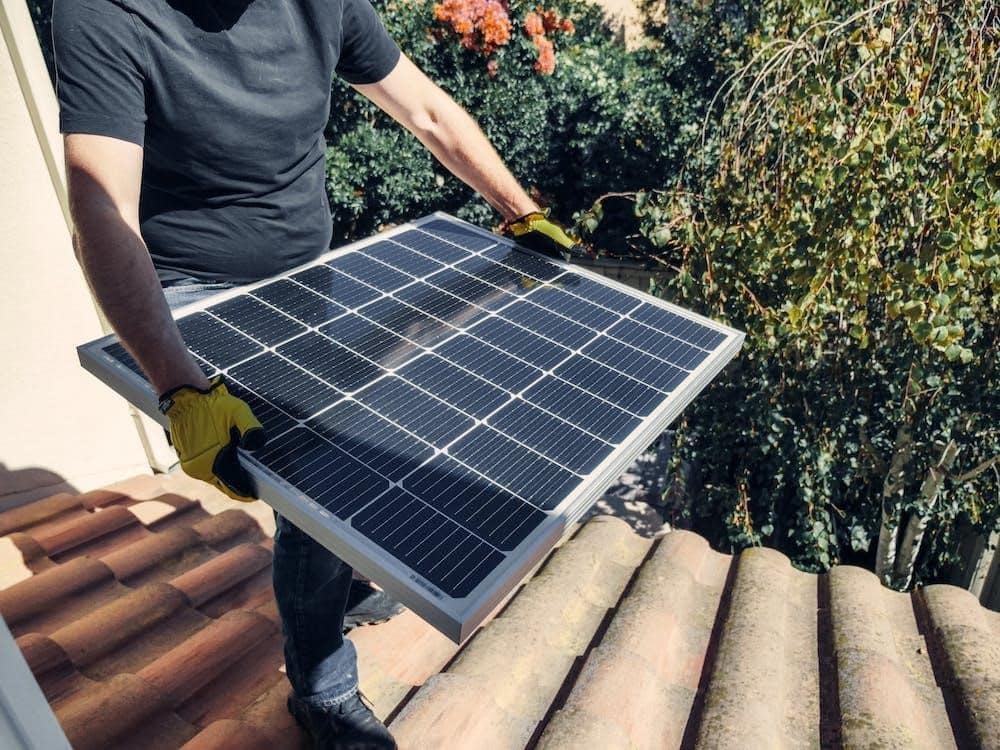Are you considering converting your home to solar energy? You’re not alone! As electricity costs rise and awareness of environmental issues increases, more homeowners are exploring the benefits of solar energy. In this guide, we will take you through everything you need to know about installing residential solar panels.
Are solar panels suitable for my home? For many homeowners, solar panels are a great option. If your roof is in good condition and has enough space for solar panels, that’s a good start. A south-facing roof is ideal, but other roofs can also accommodate solar panels. Sun exposure is also crucial. If your home receives ample sunlight throughout the day, you’re fortunate, but even in areas with year-round cloud cover, solar panels can still generate some electricity, albeit less. Your energy consumption is another important factor to consider. If your electricity needs are high, solar can help reduce your utility bills, but the greater your energy demand, the more solar panels you will need.
Here are the five main considerations before using solar energy at home:
1. The advantages and disadvantages of solar panels. Every investment has its pros and cons. Solar panels offer numerous benefits, including reduced energy costs, increased home value, and decreased carbon footprint. However, they also have some drawbacks, such as high upfront costs and reliance on sunlight. According to the U.S. Department of Energy, homeowners can expect a return on investment of 20% to 30% in energy savings over the entire lifespan of solar panels. 2. Current electricity bills. Carefully examine your current electricity bills to understand your energy consumption, which will help you determine the size of the solar system needed. On average, American households use about 899 kilowatt-hours per month, or approximately 10,791 kilowatt-hours per year. 3. How many solar panels do you need? The number of solar panels required depends on your energy usage and the efficiency of the panels. On average, a 6kW system consists of about 15 to 20 panels, assuming each panel generates about 300 watts of electricity. By assessing your energy needs, you can estimate how many panels are sufficient to meet your power requirements. 4. Can you use net metering? Net metering allows you to send excess energy generated by solar panels back to the grid for utility bill credits. This can significantly enhance the economic viability of a solar system. Check your state’s net metering policy to ensure you can benefit from this arrangement. 5. How will you finance your solar system? Financing options for solar installations include direct purchase, solar loans, leasing, or power purchase agreements (PPA). Each method has its pros and cons: Direct purchase: The highest upfront cost, but can save you the most in the long run. Loans: Allow you to pay in installments and may offer tax benefits. Leasing/PPA: Reduce upfront costs, but you do not own the system, which limits economic benefits. Can you DIY your solar system? Yes, you can set up a DIY solar system, but you must proceed with caution. Installing a solar system involves multiple components—solar panels, inverters, mounting systems, etc. You need to understand how each part fits together and works in coordination. If you are not familiar with electrical systems, this can quickly become complicated. Our recommendation is to purchase ready-made solar system kits, which will configure all product setups for you. Is it worth using solar energy? One of the most pressing questions for homeowners considering solar energy is: Is it really worth the investment? The answer largely depends on your energy consumption.If your energy consumption is high, then switching to solar energy is undoubtedly worthwhile. High energy consumption equals greater savings. If you find yourself constantly facing high electricity bills, solar energy can save you a significant amount of money on electricity bills. For example, the average monthly electricity bill for American households is about $120, totaling more than $1,400 per year. With a solar energy system, you can significantly reduce or even eliminate these costs. Many states offer net metering plans, allowing you to earn credits for any excess energy generated by solar panels. This not only reduces your electricity bill but also turns your system into a source of income. Shielden 5kW solar system. At Shielden, we offer a powerful 5kW solar system designed to meet the needs of ordinary households. This system can generate about 6,000 to 7,000 kilowatt-hours of electricity per year, which is usually sufficient to meet a considerable part of your energy consumption. Frequently Asked Questions: 1. How much does a solar system for a 2,000-square-foot house cost? On average, the price of a solar system for a house of this size (before deducting incentives) is probably between $15,000 and $25,000. 2. Can a home be powered solely by solar energy? Yes, a home can be completely powered by solar energy, especially if equipped with a battery storage system. This way, you can store excess energy generated during the day for use at night or on cloudy days. However, achieving complete energy independence requires careful planning and may require a larger solar array depending on your energy needs. 3. How many solar panels are needed to power an air conditioner? The number of solar panels required to power an air conditioner depends on its energy consumption. For example, for a central air conditioning unit with a power of 2,000 to 4,000 watts. If we assume that the power generation of an ordinary panel is about 300 watts, then about 7 to 13 panels are needed to run the air conditioning unit. 4. How many solar panels are needed to power an entire home? The number of solar panels required to power an entire home depends on energy consumption. On average, a home may need 15 to 30 solar panels to meet its energy needs. Conducting an energy audit can help you determine the exact number required for your situation.
